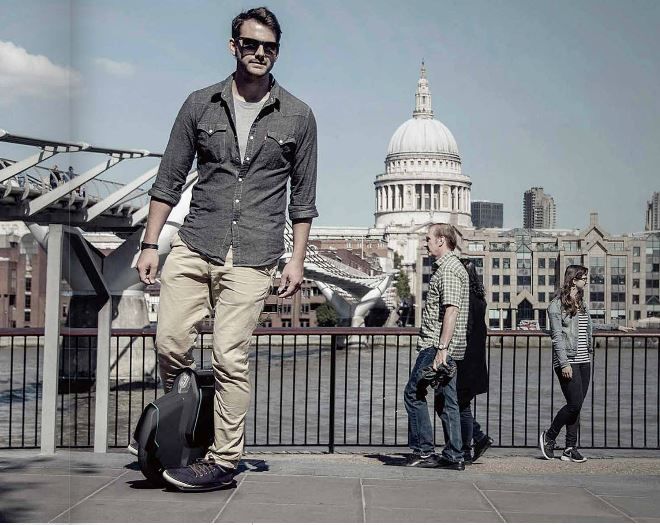Optimizing the technology of tomorrow
The Record Issue 1: Summer 2016
Siemens PLM Software solution enables start-up to cruise from design concept to fully engineered product in seven months
Subtle weight transfer may be the key to gliding through the urban environment on an electric unicycle, but thoughtful design is the key to comfort and performance. This industrial design ethos prompted London-based start-up Uniwheel to set about transforming a generic unicycle design into one that is ergonomic and reliable.
Uniwheel’s goal, to be the first to market with a design that was thoroughly thought through, was met at the end of 2015 when it launched its first consumer product just seven months from first concept. The use of NX software from Siemens PLM Software was fundamental to the success and speed of the development project.
The design team began using NX to create basic 3Dmodels of elements such as the external styling of the plastic case, which has integrated lighting; the metal for the pedals and motor; and fine details such as the grip on the surface of the pedals. The main challenge was to package the sophisticated electronics and software, removable battery packs, motor and wheel housing. Allocating appropriate spaces for the wiring looms was critical. With an emphasis clearly on the ergonomics of the main casing, 3D curves had a big role to play.
With safety a key focus throughout the design process, a range of sensors had to be incorporated into various parts such as the pedals and handle. Much thought went into designing the wheel and tire, then refining tire pressure to create more surface contact with the ground to provide stability and assist with battery life. The team used NX to design a specific tread pattern that would allow water to run off quickly for better grip.
Nearly 400 different components and 25 pieces of tooling were created and assessed within NX to ensure that there were no interference or clash problems. In some cases 3D printing was used to create rapid prototypes, particularly for the bidirectional lights which alter according to the machine’s orientation, adjust to levels of daylight and grow brighter when the rider is slowing down.
Engineers devised a test rig for conducting physical wear-and-tear testing to replicate the process of the unicycle being knocked about in daily use.
“The main case is very complex, yet the only issues we found in testing were cosmetic, and we could easily see and adjust the fine detail of the surfaces,” says Steve Godden, a Uniwheel designer. “With NX we get superb clarity and precision.”
With several international suppliers lined up to do tooling, it was imperative that Uniwheel’s designers could convey the design intent. The use of NX and the direct transfer of computer-aided design files enabled clear and constructive discussion about the tooling and manufacturing process. Only one tooling trial was conducted, as part of the process of refining the lights. “NX gave us confidence right from the start,” reports Steve Milton, director and chief executive of Uniwheel. “We knew that if we checked everything in NX we would not get too many questions from our suppliers.”
Using NX to optimize the way all the design elements come together, the Uniwheel team was able to reduce overall weight by more than two pounds, an achievement that led to the casing for the motor being patented. The team was also able to hide screw holes in the main case while ensuring ease of assembly. It takes just one hour to put together a finished product in Uniwheel’s London research and development unit.
For Uniwheel’s team of designers, the reliability and stability of NX was critical. “From past experience I knew that NX is robust and utterly predictable, and with our ambitious timescales that is exactly what we needed,” observes Mark Kennell, designer.
Designed and assembled in the UK, theUniwheel is streamlined to fit the lower leg and delivers up to 90 minutes of ride time. It can reach speeds of 12 miles per hour and has a range up to nine miles, yet it takes just one hour to charge fully. The controls are easy to negotiate and customization is enabled through the colorful bumpers, which can be replaced if they get scratched from regular use. The pedals can also be exchanged.
Tapping into growing demand for assisted personal transportation, Uniwheel is already considering future developments. “As performance-to-weight is of critical concern to us, we are planning to expand our capability using NX for CAE,” says Milton. “It is vital to us that NX is so reliable. This was a start-up, with an ambitious target and a young team of designers who had not taken a product from design to manufacture before, yet I knew that NX would take us from visualizing on a piece of paper to the finished product.”







